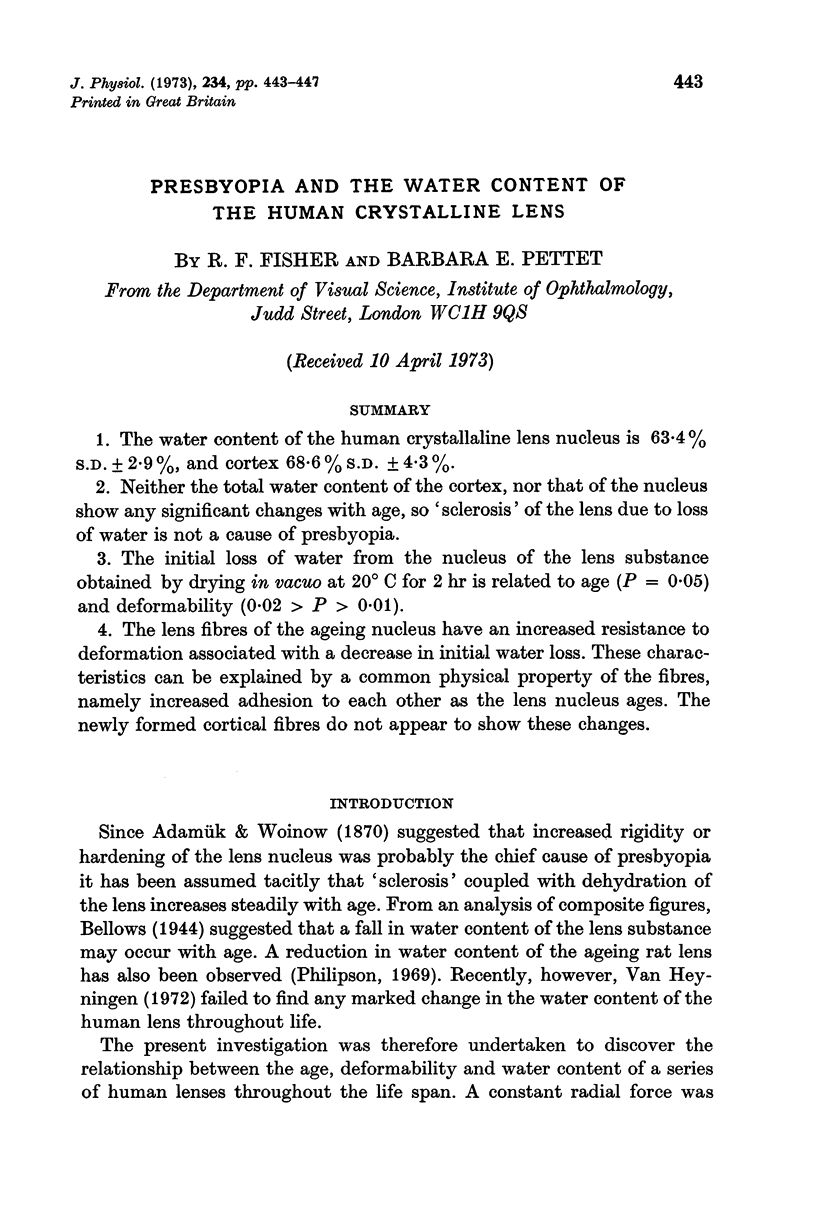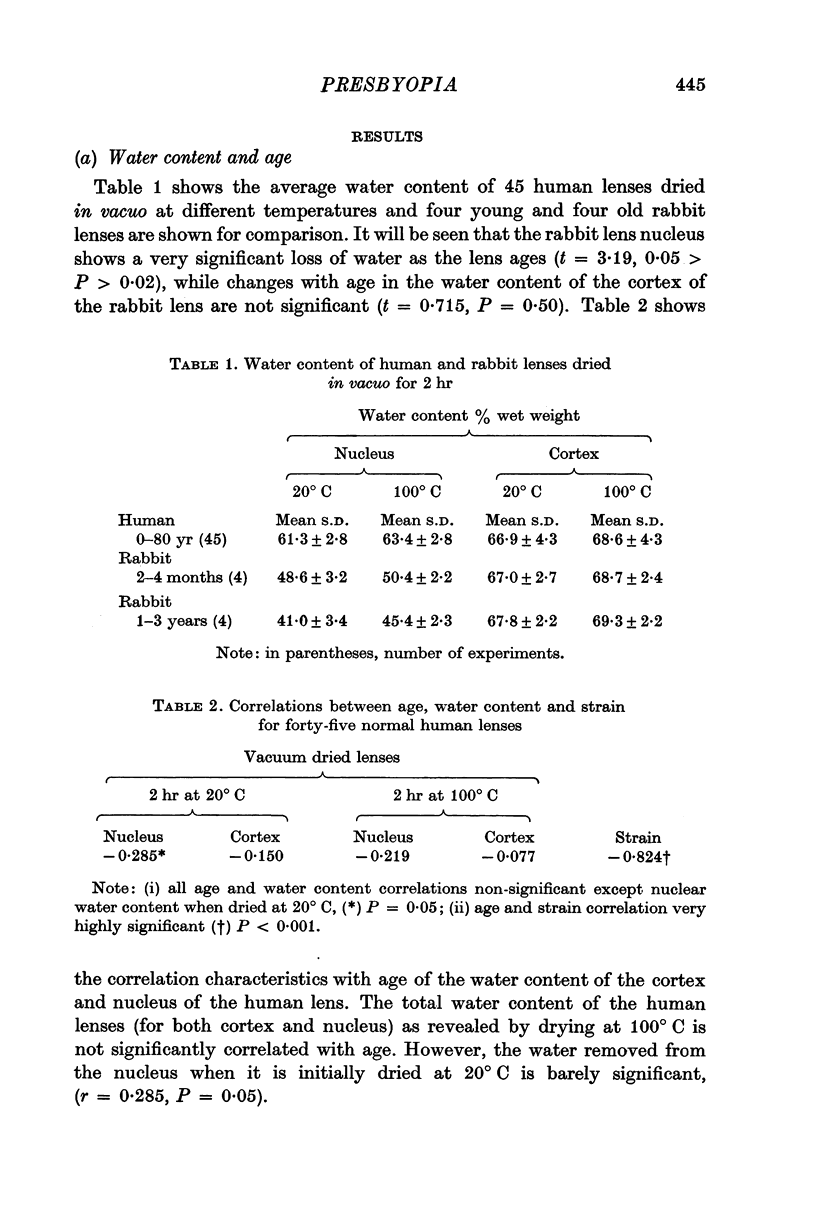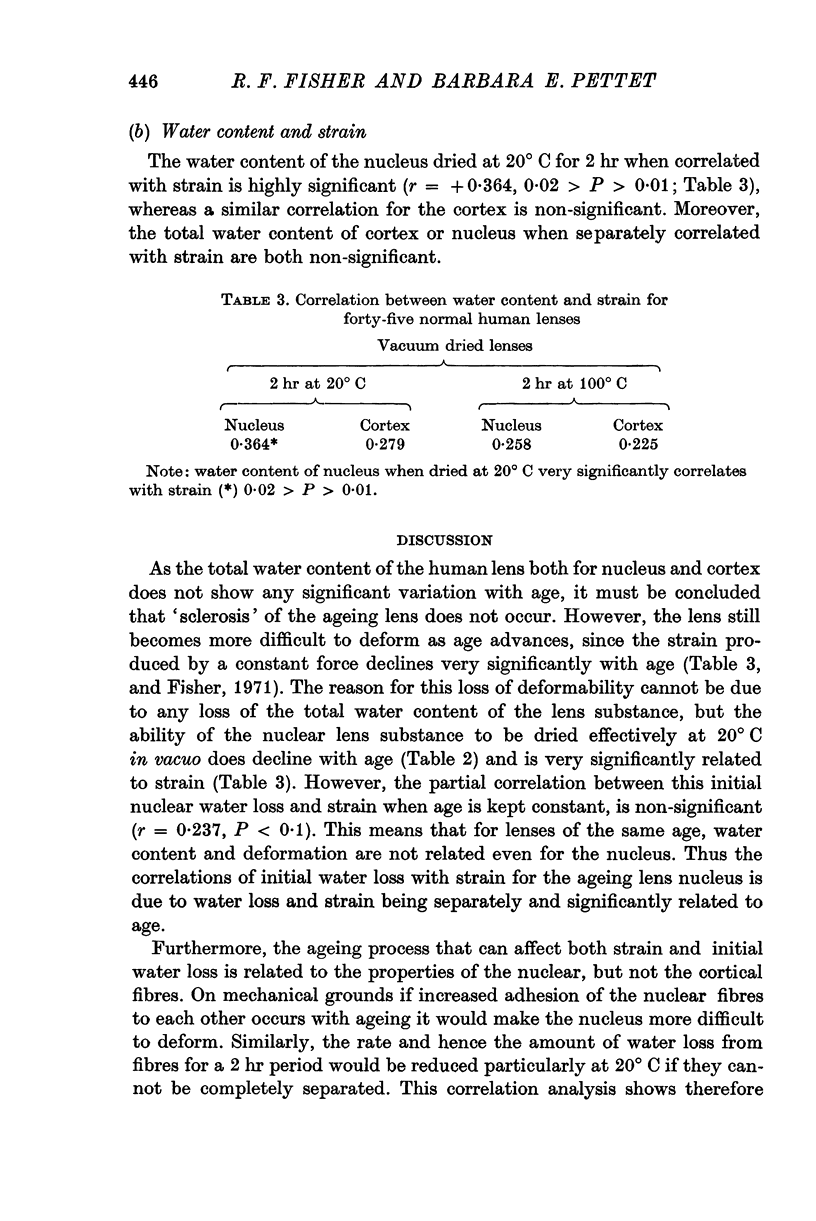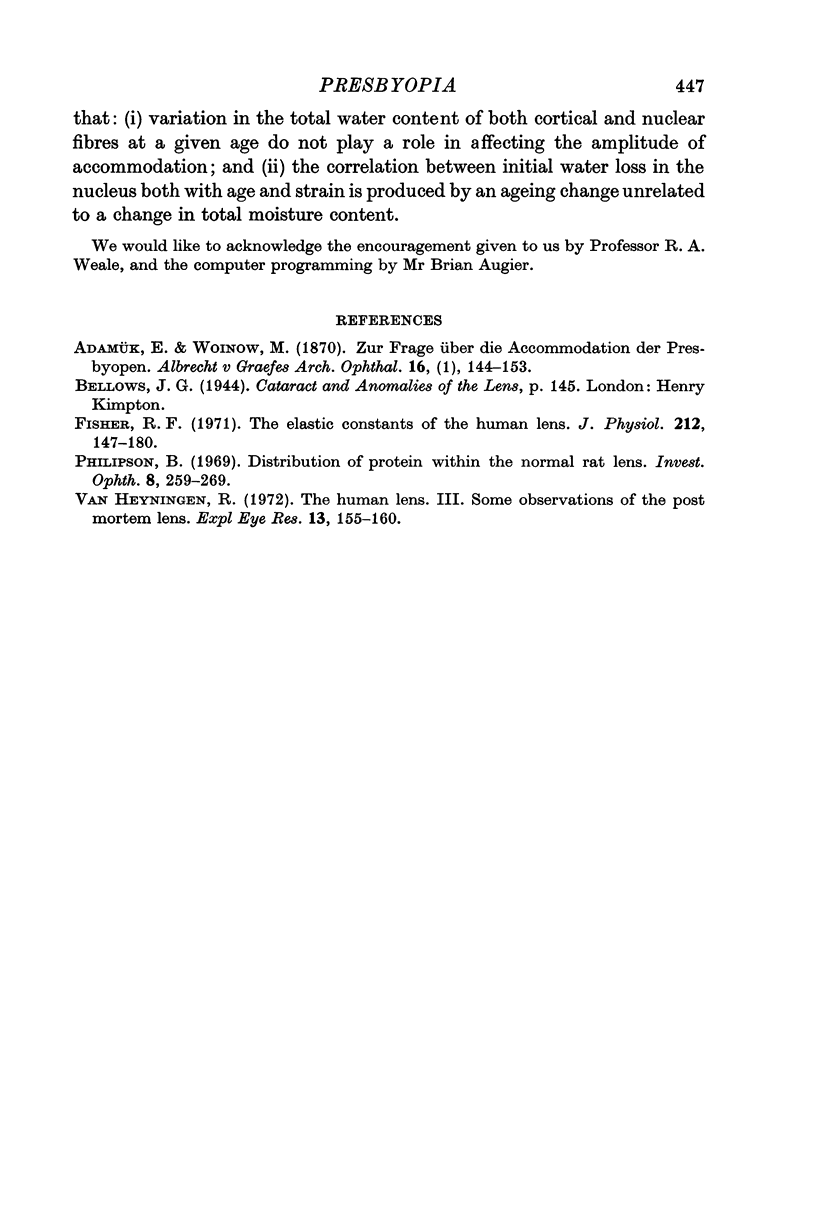Abstract
1. The water content of the human crystallaline lens nucleus is 63·4% S.D. ± 2·9%, and cortex 68·6% S.D. ± 4·3%.
2. Neither the total water content of the cortex, nor that of the nucleus show any significant changes with age, so `sclerosis' of the lens due to loss of water is not a cause of presbyopia.
3. The initial loss of water from the nucleus of the lens substance obtained by drying in vacuo at 20° C for 2 hr is related to age (P = 0·05) and deformability (0·02 > P > 0·01).
4. The lens fibres of the ageing nucleus have an increased resistance to deformation associated with a decrease in initial water loss. These characteristics can be explained by a common physical property of the fibres, namely increased adhesion to each other as the lens nucleus ages. The newly formed cortical fibres do not appear to show these changes.
Full text
PDF




Selected References
These references are in PubMed. This may not be the complete list of references from this article.
- Fisher R. F. The elastic constants of the human lens. J Physiol. 1971 Jan;212(1):147–180. doi: 10.1113/jphysiol.1971.sp009315. [DOI] [PMC free article] [PubMed] [Google Scholar]
- Van Heyningen R. The human lens. 3. Some observations on the post-mortem lens. Exp Eye Res. 1972 Mar;13(2):155–160. doi: 10.1016/0014-4835(72)90028-0. [DOI] [PubMed] [Google Scholar]


